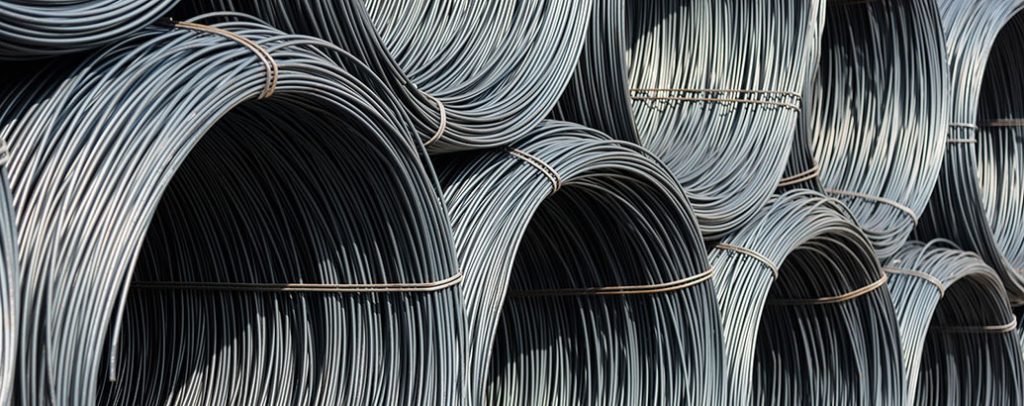
Coil Rebar
What is coil rebar and what is its use?
Coil rebars, as its name implies, are intricate coils that are widely used in construction and industrial structures and are available in different sizes in the market.
What are the types of coil rebars?
Coil rebar is commonly used in industry in both ribbed and plain coils.
Simple coil rebar:
This type of rebar is available in 4 categories and from 5.5 to 16 mm in size. Sizes 5.5 to 8 are known in the market as wire. It is noteworthy that this product is produced in factories up to size 12 and higher sizes are custom-made.
Rebar 5.5 simple coil RST34
Rebar 6.5 Simple coil RST34
Rebar 8 simple coil RST34
Rebar 10 simple coils RST34
Ribbed coil rebar:
This type of rebar is divided into two categories A2 and A3. The price of this type of rebar in the market is determined based on its category and size. Usually the price of ribbed rebar is more than its simple type. Of course, this depends on the size of the rebars.
What are the applications of coil rebar?
1- Building
2- Trusses and beams
3- Towing wire
4- Barbed wire
5- Metal chains
6- Nail-screw-rivet
7- Electrode manufacturing and welding industries
8- Fence net, fence and gabion
9- Spring making industry
10 - well-cut wire
11- Other sub-steel and conversion steel
Where are the coil rebar factories in Iran?
Isfahan steel company
Natanz Steel Complex
Kashan
Yazd
In general, wire is in the category of semi-finished products. This product is used in industry to make wires and is produced by rolling billets and ingots in a rolling mill. The semi-finished product produced by the ingot and billet is turned into wire after cold drawing. In the hot rolling method, steel ingots are first poured into rolling heat furnaces and after reaching the desired temperature for rolling operations, they are transferred to production lines. Coil rebar is also known as wire road in the industry and is used as a raw material for all special industrial, galvanized and reinforcing wires.
After producing the rebars, it is classified as a coil using the desired device. The steel used to produce wire rebars is produced by all steelmaking processes such as open furnaces, electric arc furnaces and converters. This product is produced from billet ingots by hot rolling and is known as a semi-finished product in the industry and after cold drawing stages, it is converted into various types of wires.
After producing the wire, in the final stage, it becomes a coil. The inner diameter of these coils is 85 mm and their weight is about 22,000 kg. The dimensions and weight of these coils are determined by the capacity of the production rolling factory and by welding the coils, more weights are obtained from it. The following types of wires can be mentioned.
What are the types of coil rebars?
Low carbon wire rod:
This product has a low carbon content and has high traction. Low carbon wire has a high weldability and their chemical analysis is such that it has a high weldability during traction periods at high speeds. Other features of this product include high malleability, cold rolling capability and the ability to control the proper elongation.
Medium and high carbon wire rod:
Applications of these wires include tire and rubber industry, production of springs, wires and prestressed structures of tow wire and piano wire.
Wires for the production of welding wires and electrodes:
In the production of this category of wire, it is produced from boiling steels, semi-quiet or completely quiet and is used to produce various types of electrons as well as various types of welding wires.
There are generally rules for transporting rebars that must be followed. But in general, the coil mode can be used to transport small rebars up to 10 mm. In this way, their transportation will be easier by mobile. Then, before using the rebar in the desired project, the coil rebar is opened in the workshop by special devices. Other moisturizing agents prevent. The reason for this is to prevent any rust in the rebar.
One of the most common mistakes in transporting and storing rebars is the use of nylon covers. Sometimes the same nylon cover increases the risk of rust. Therefore, be sure to use suitable coatings such as tarpaulins if you want to use a coating to prevent iron from rusting.
Therefore, rebar is actually used to compensate for the low tensile strength of concrete in concrete structures. For this reason, rebars are also called concrete reinforcing agents. Because concrete generally has good resistance to compressive forces, but tensile forces cause it to break. For this reason, in almost all concrete structures, whether horizontal, such as highways and bridges, or vertical, such as buildings, rebars are used to withstand tensile forces.


